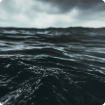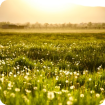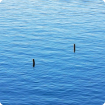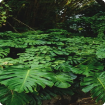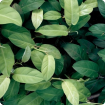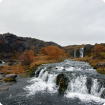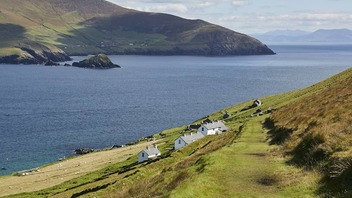
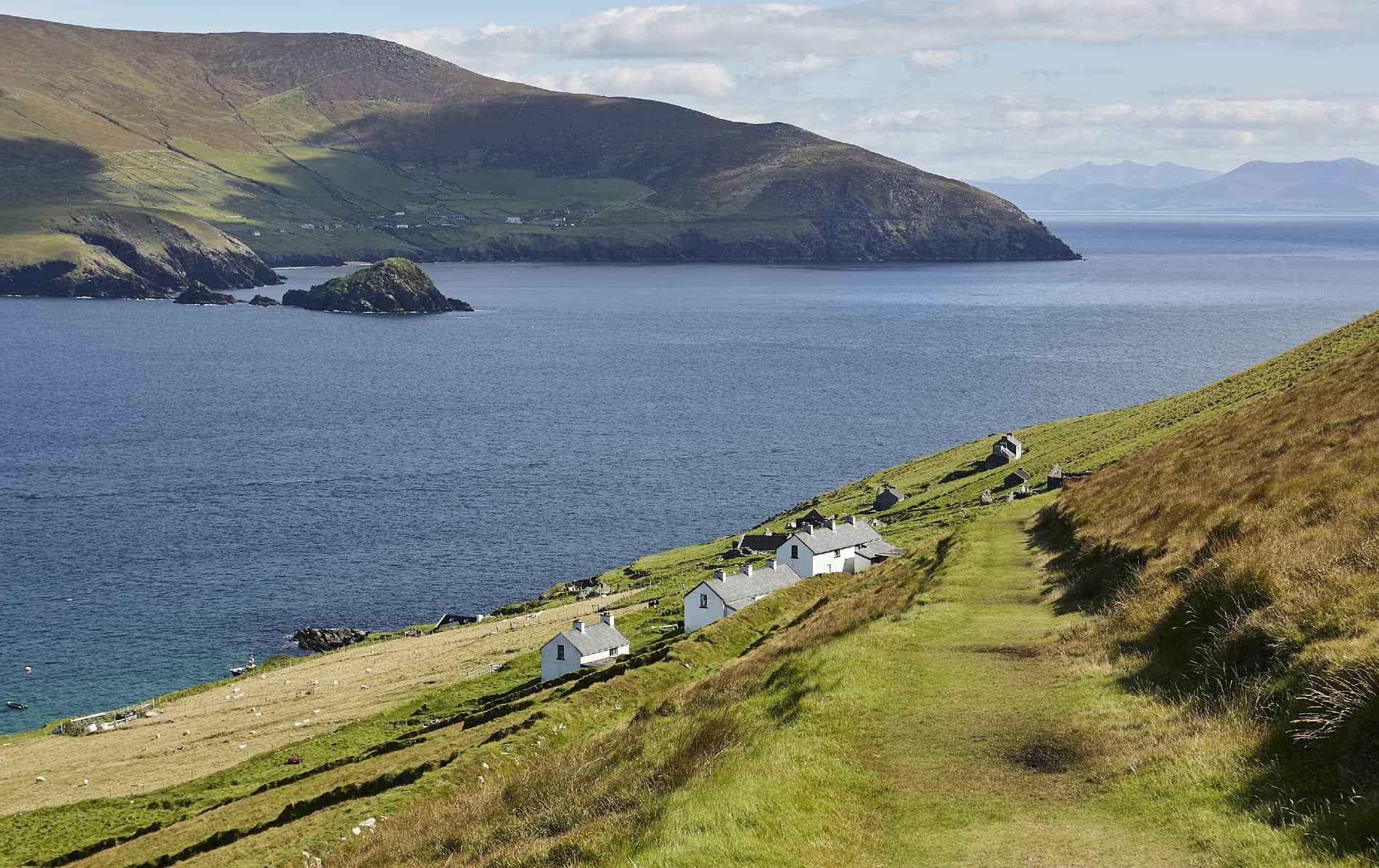
A boat trip to the Blasket Islands
“It’s one of the most dangerous stretches of water in Europe,” says our skipper, Billy. “The currents here can be quite bad, the water rushes in like a river.” We’re bobbing about in the Blasket Sound aboard the “Peig Sayers” Stormforce 11 RIB speed boat as part of the Great Blasket Island Experience tour.
Ahead of us lies the cloud-darkened mass of the Great Blasket Island, which writer Seán Ó Faoláin once described as “wallowing like a whale in the darkening sea”. Its steep slope is strewn with broken-down cottages; a place suspended in the past.
The weather hasn’t been on our side for the trip out here. For more than an hour, we’ve rolled over silver-tipped Atlantic waves that have slapped the boat and caused varying degrees of sea-sickness in some of the passengers on board. We’ve passed ancient forts, jagged sea cliffs and majestic rock formations along the coast of the Dingle Peninsula, but the green faces tell their own story.
“Just sit down when you get onto land,” Billy says kindly as he helps the unwell onto a dinghy for the final journey to the island. “That’s all you can do… it will pass.”

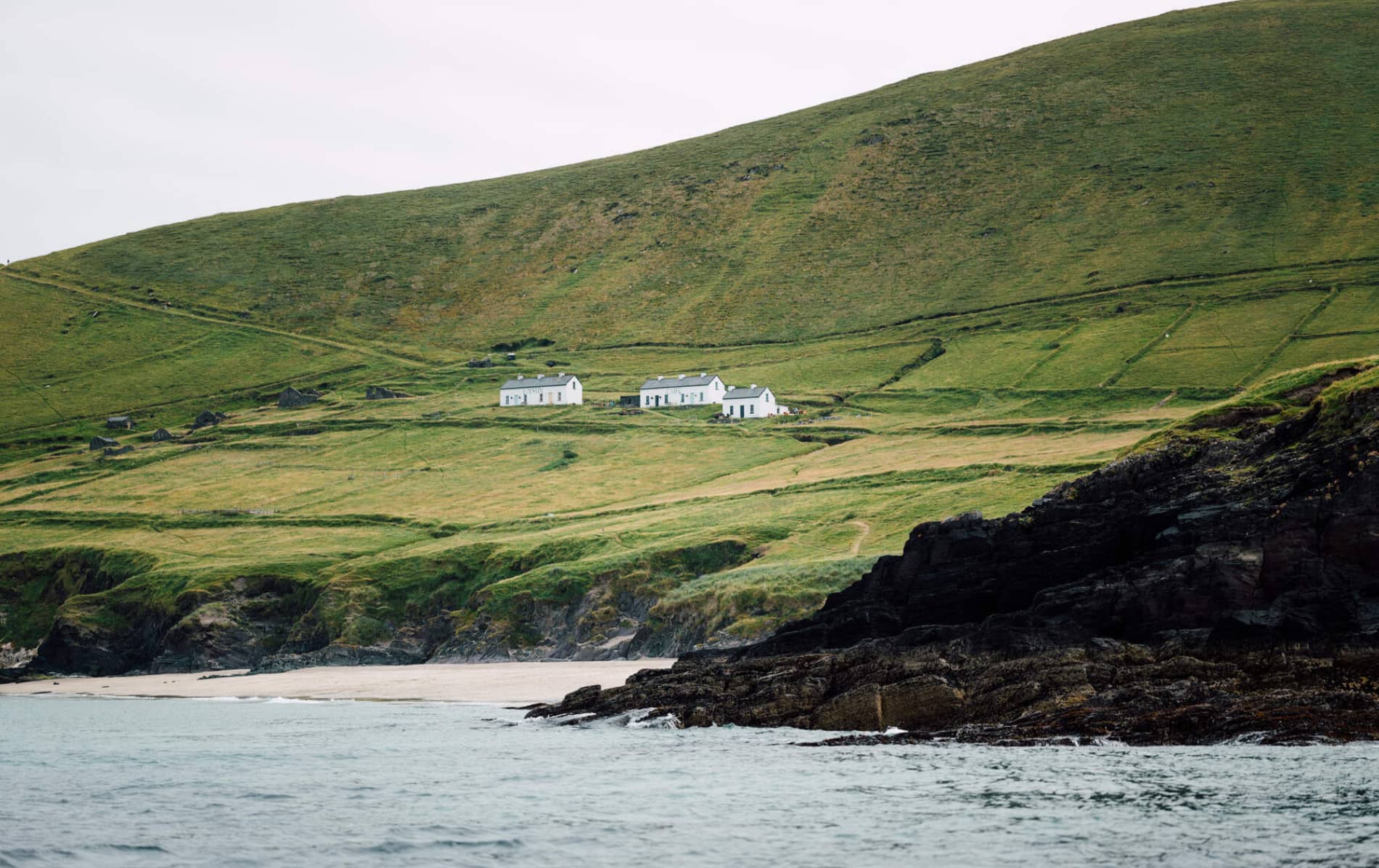
Great Blasket Island © Tourism Ireland
For centuries, the Great Blasket Island was home to a community of people for whom crossing these waters was a way of life. It’s thought that the islands were first inhabited in the 1700s, but by 1954, the population had dwindled from a peak of 176 in 1916 to just 22 – and they were ready to depart for a new life on the mainland.
“There was no option but to leave,” islander Gearóid Cheaist Ó Catháin told the Irish Times in 2014. The isolation of the Great Blasket locals was tested by the death a young man from meningitis; bad weather meant he couldn’t access medical care, nor could they access a coffin for him after his death. “People got scared. They were getting old and the isolation started to get to a lot of them.”

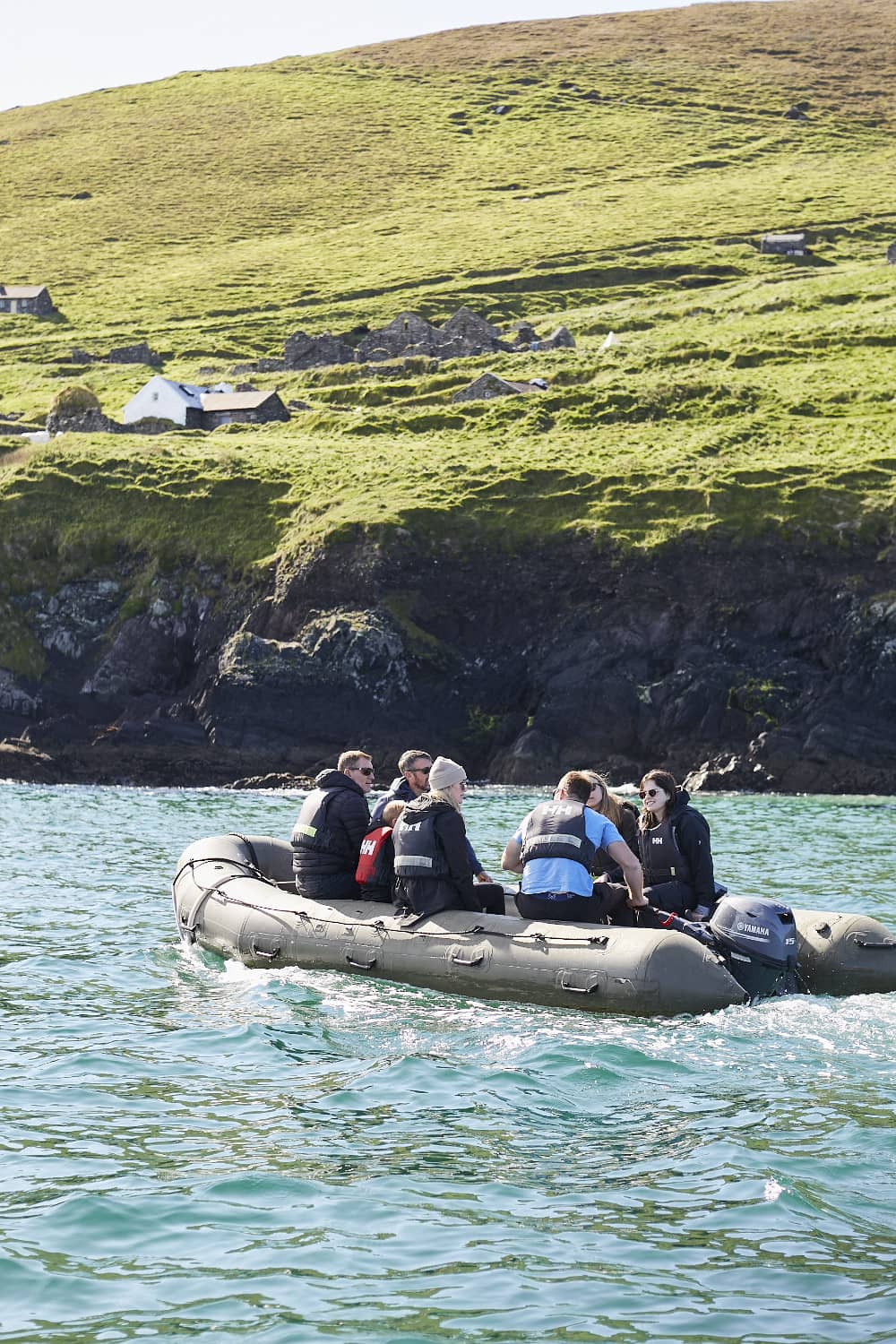
Dinghy to the Great Blasket Islands

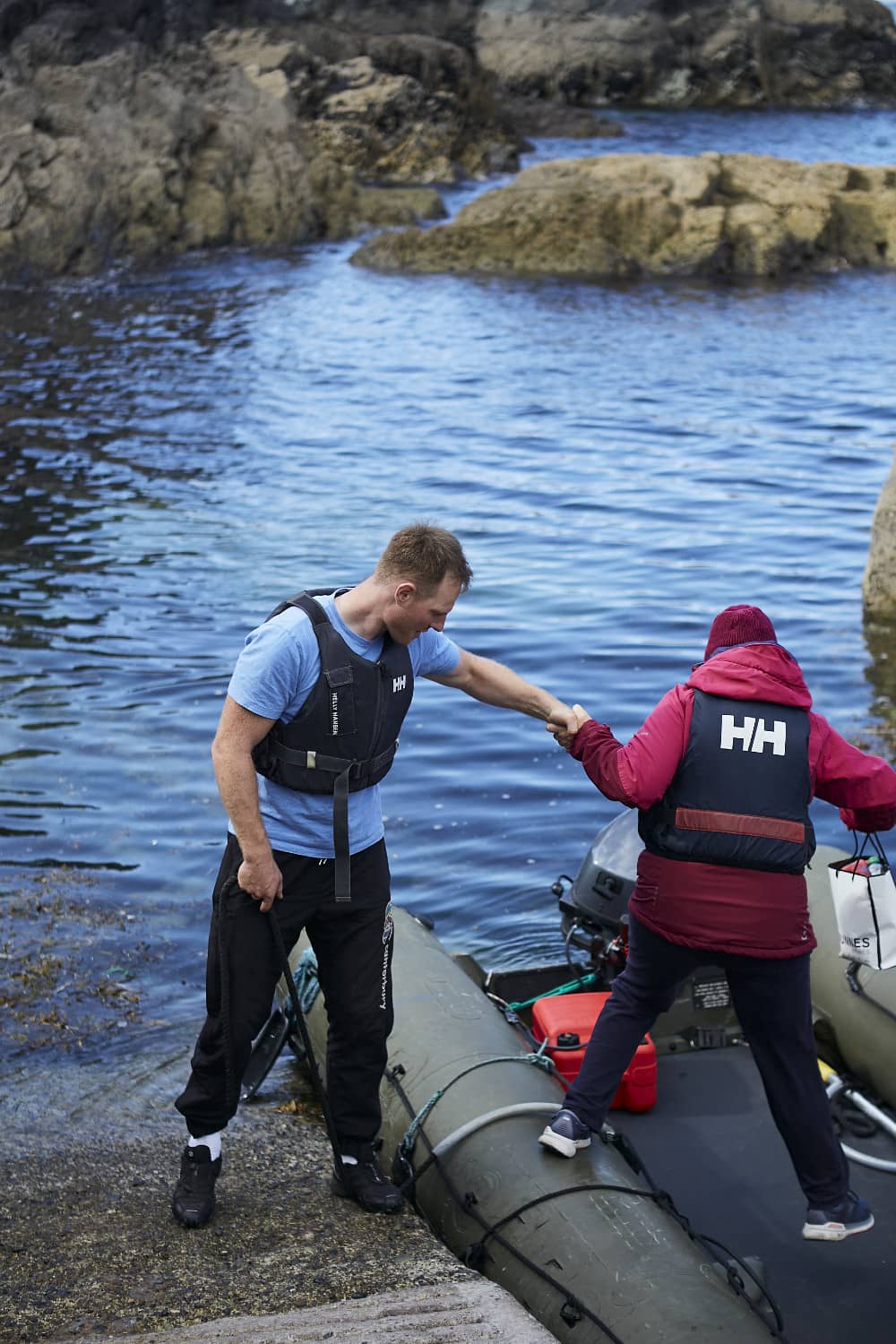
Billy helps visitors into the island
Crossing in the dinghy under an ashen sky, it’s easy to appreciate a small bit of the unpredictability of life here, where summers must have been glorious and winters dark and brutal. A simple landing on the island at the small harbour is an adventure in itself. After that, it’s a steep hike up the slippy, jagged rocks, followed by a sharp grassy incline that causes even the fittest of the group to pause for breath.


Great Blasket Island pier
Out in the ocean rises the archipelago of misty-green islands: Inis na Bró, An Tiaracht, Inis Tuaisceart. To our left and right is the abandoned village of broken-down cottages that seem to be slowly being consumed by the landscape. I wait behind as our group trails on up the ridge. It’s suddenly eerily silent but for the mournful bellows from the island’s colony of grey seals.
It’s hard to imagine the Great Blasket as a hive of activity, but at its peak 30 houses were wedged into the side of this hill, as well as cattle, sheep, donkeys and poultry. Smoke would have puffed out of cottage chimneys, villagers would have been hard at work, children’s voices would have been heard.
Today, it’s a different world.

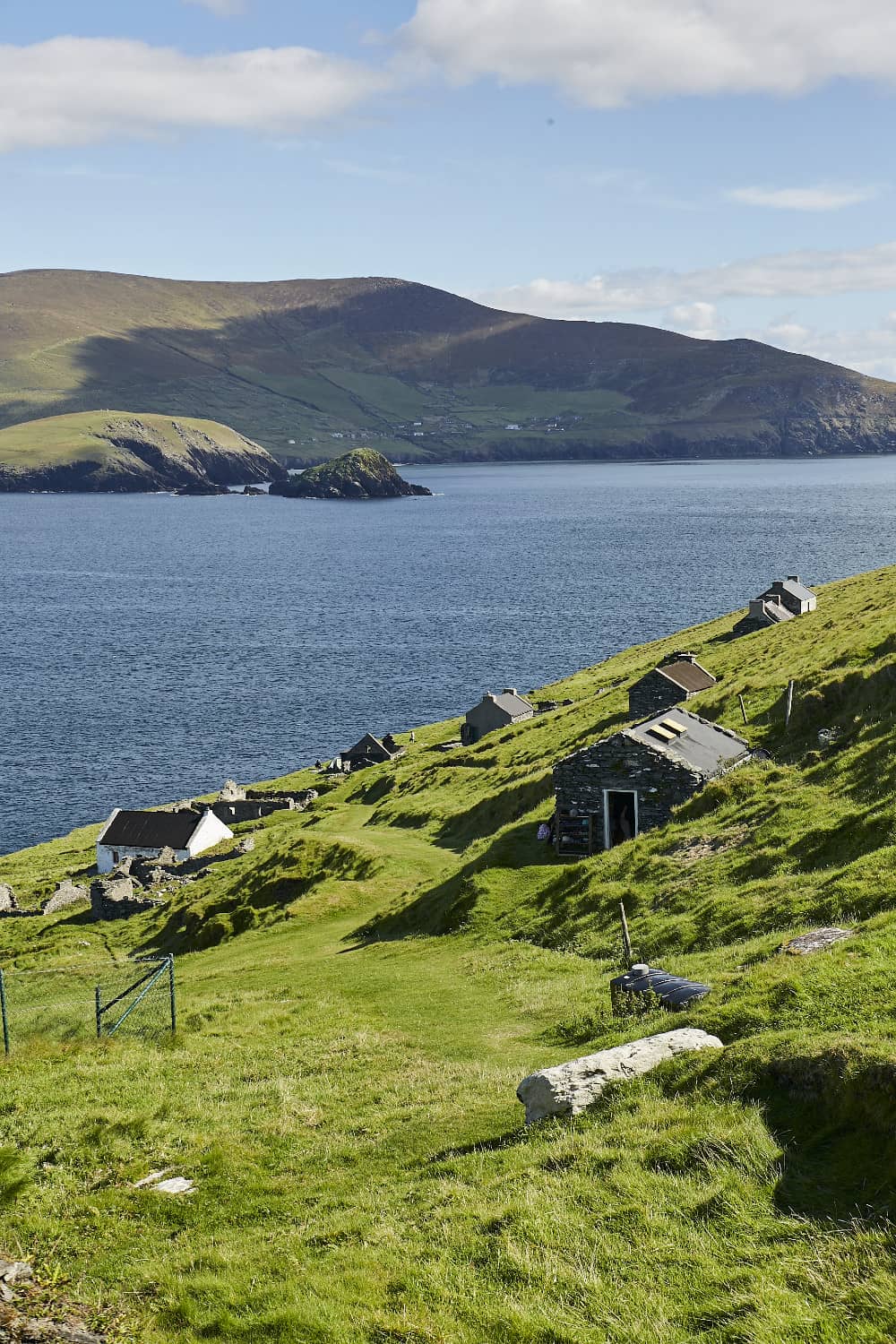
Abandoned village on Great Blasket Island

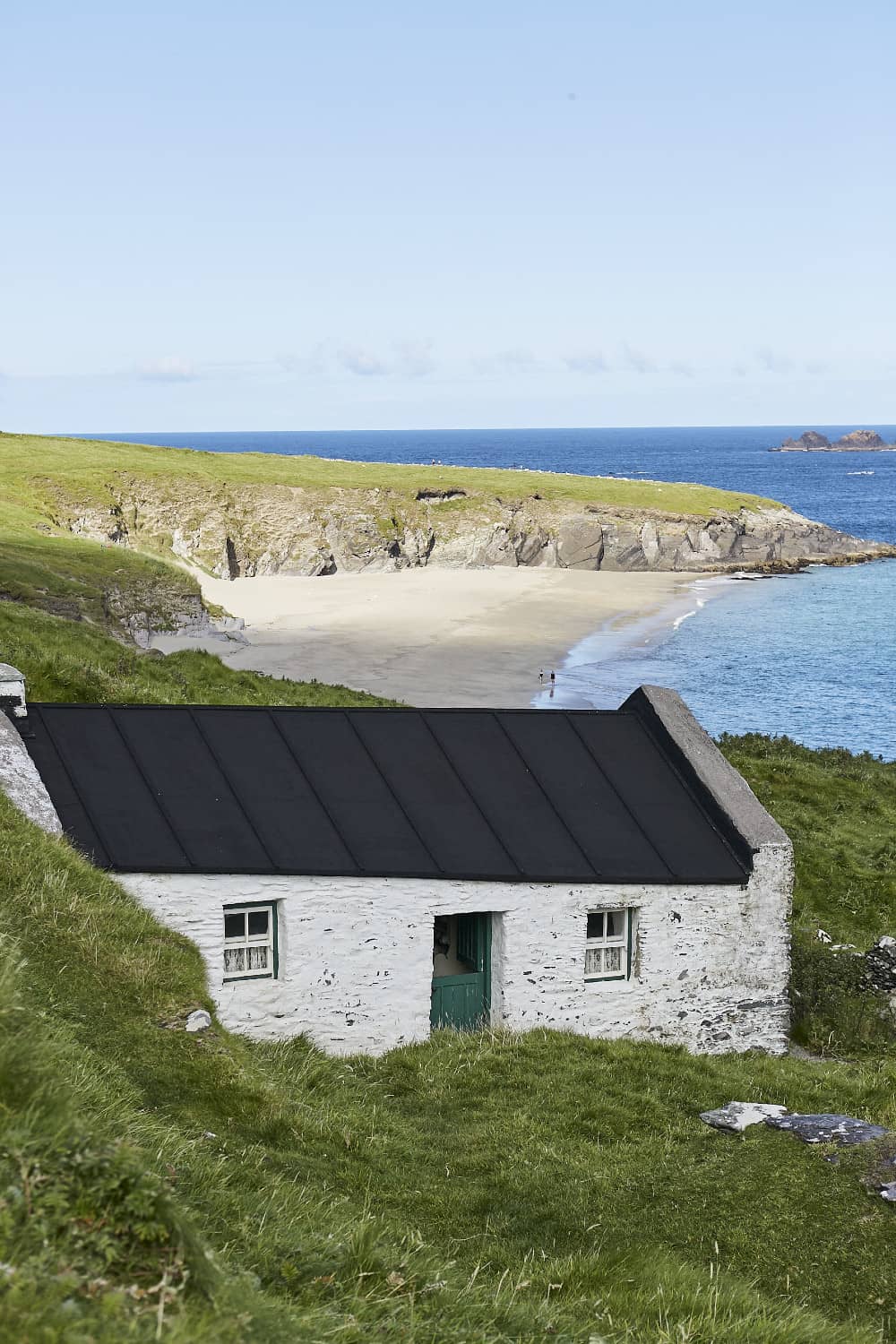
Tomás Ó Criomhthain’s restored cottage
Usually, a visit to the Blaskets would begin with a tour and talk from an OPW guide, but this is weather permitting, and the rough sea conditions today have limited the amount of boats crossing over. After spending some time exploring the cottages, I decide to undertake the 90-minute walking route around the island’s precipitous hills.


Great Blasket Island hills
The grassy path leads away from the village towards the cliffs and as I venture along, a pack of strange flies dance around my head, my boots are filled with muddy water from several missteps, and the warm, windless air becomes thick with midges.
But what beauty there is here, with heather-flecked hills that tumble down to a flinty sea studded with misty-green islands.
For the 90 minutes I’m walking, I don’t meet a single soul.

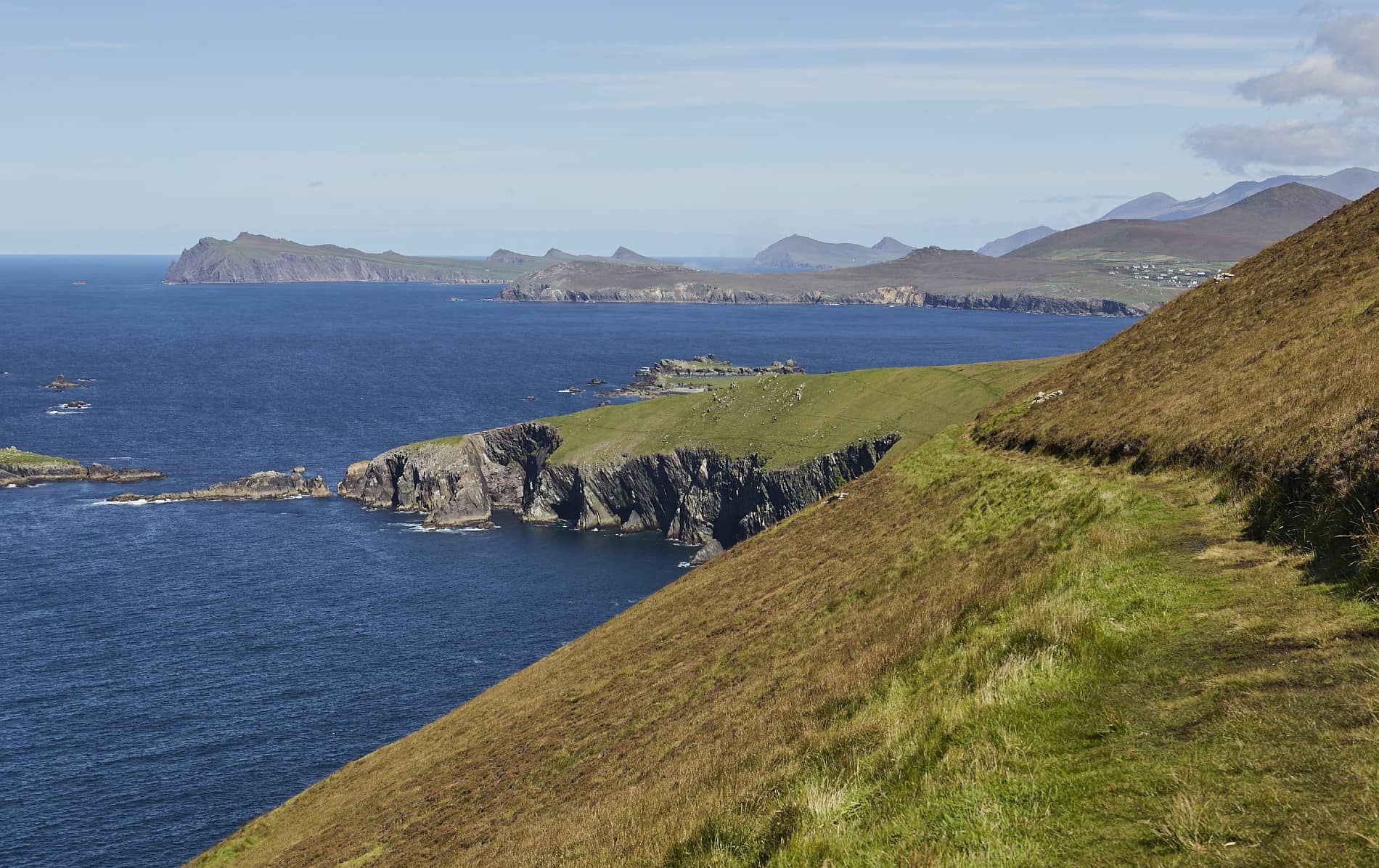
Views from the Great Blasket Island
The beauty of the Blaskets has been written about extensively, but while the island is large, the liveable bit of it feels quite small. Instead, the vast bulk of the Great Blasket is made up of cliffs, hills and bog. Living in this environment was challenging, and it wasn’t uncommon for islanders to fall to their deaths. The son of one of the Blasket’s most famous writers, Peig Sayer, died while pulling heather on one of the slopes here in 1920.
As I round the southern edge, the village comes into view and the white of writer Tomás Ó Criomhthain’s restored cottage looks remarkable against the almost otherworldly green of the grass. It’s extravagantly, heart-stoppingly beautiful. I’ve just enough time to walk down to where the cliffs overlook the pale sands of the beach, and sit and watch the seals while having my lunch.

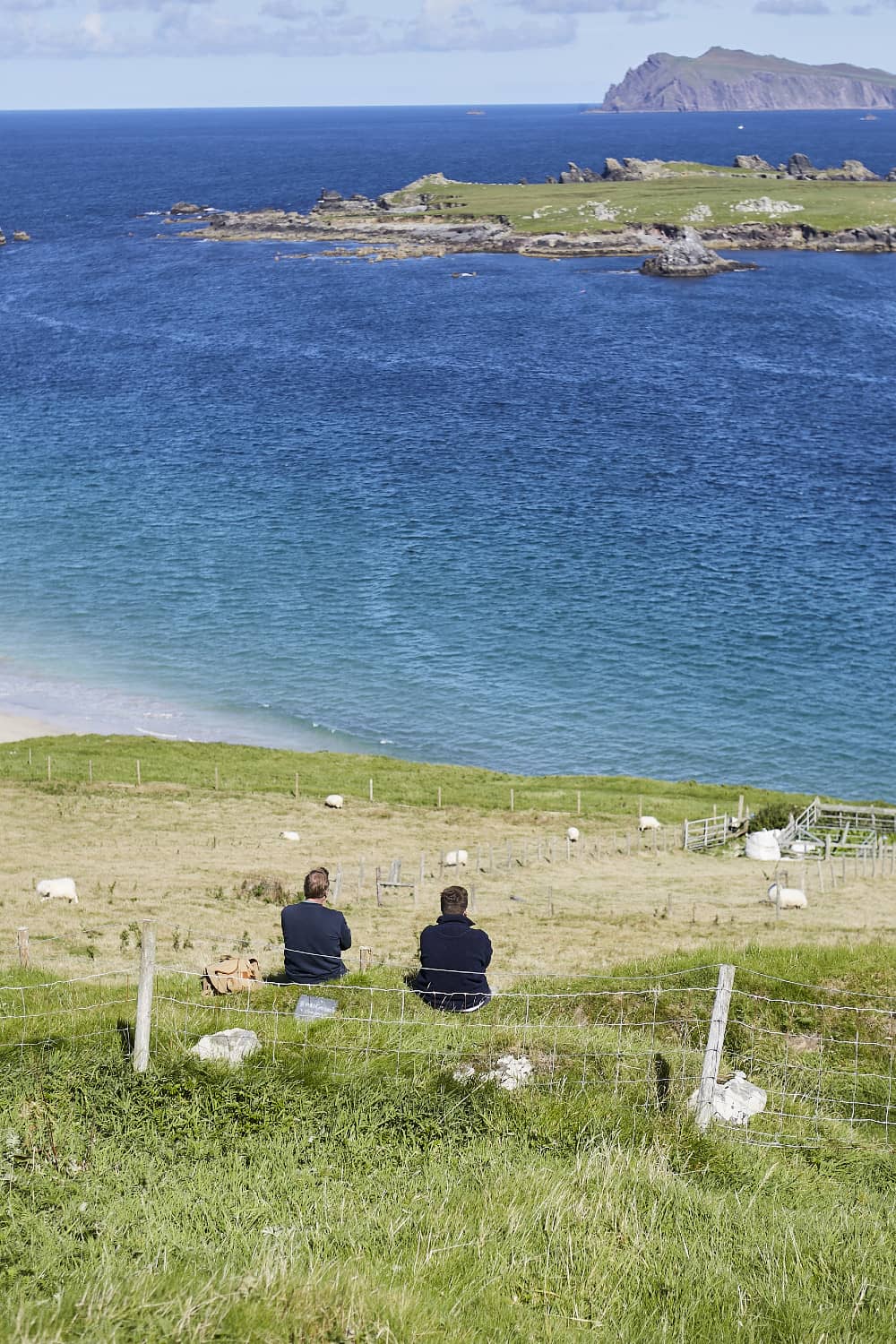
Visitors relaxing on the island

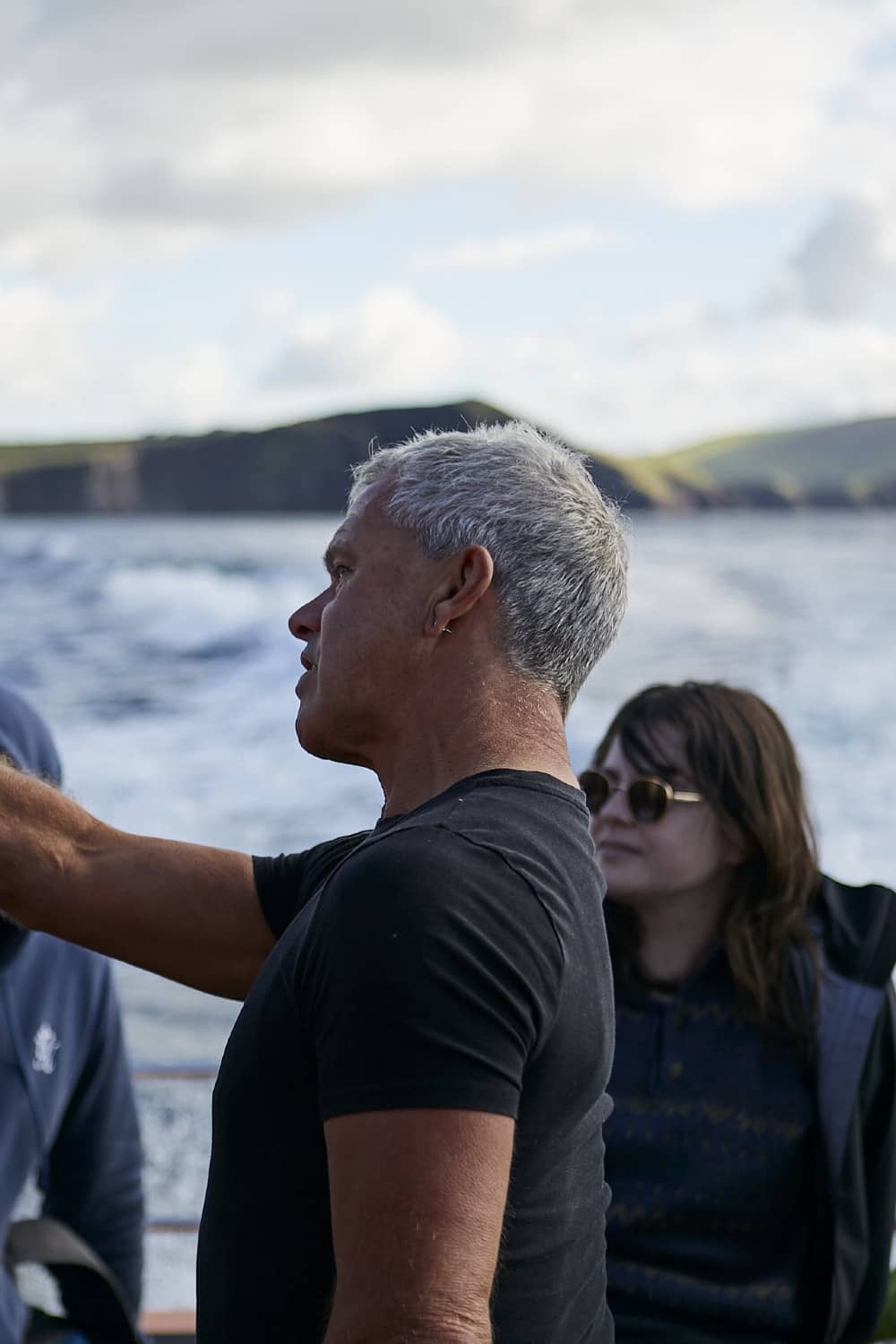
Chris from The Great Blasket Island Experience
Back in the boat, Billy is eager to get us going to see some of the area’s wildlife. With the engine off, we bob about close to shore while the seals pop up their heads as if engaged in an endless game of whack-a-mole.
The grey seal colony here is now the largest in Ireland, but these playful creatures only moved in after the humans left. In the past, they would have been hunted by islanders, who used to roast their meat for food and use their skins and oil.

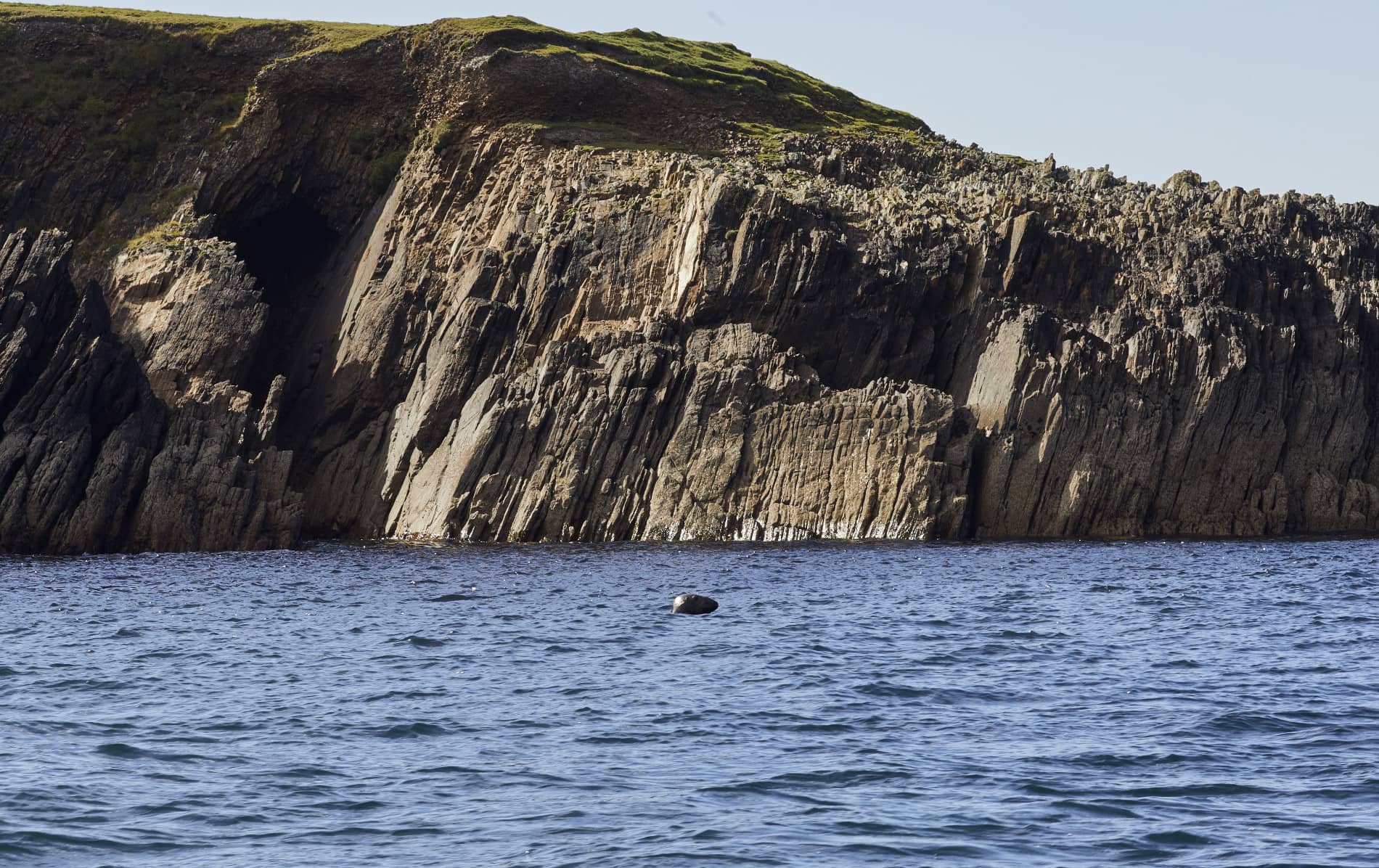
Seal at the Blasket Islands
Billy hopes we’ll spot more wildlife, but he’s managing our expectations and says he doesn’t fancy our chances. Still, off we set at high speed, heading towards what feels like the horizon. “We’re looking for where the gulls are feeding, where the fish are”, Billy explains as he scans the stony water, eyes narrowed, attention fully focussed.
It feels like we’re suspended between moments of stillness and mad dashes after something imperceptible. Astonishingly, we suddenly find ourselves surrounded by a frenzy of common dolphins, with Billy excitedly telling us how they round their fish into a circle, bunching them tighter and tighter before taking turns to feed.

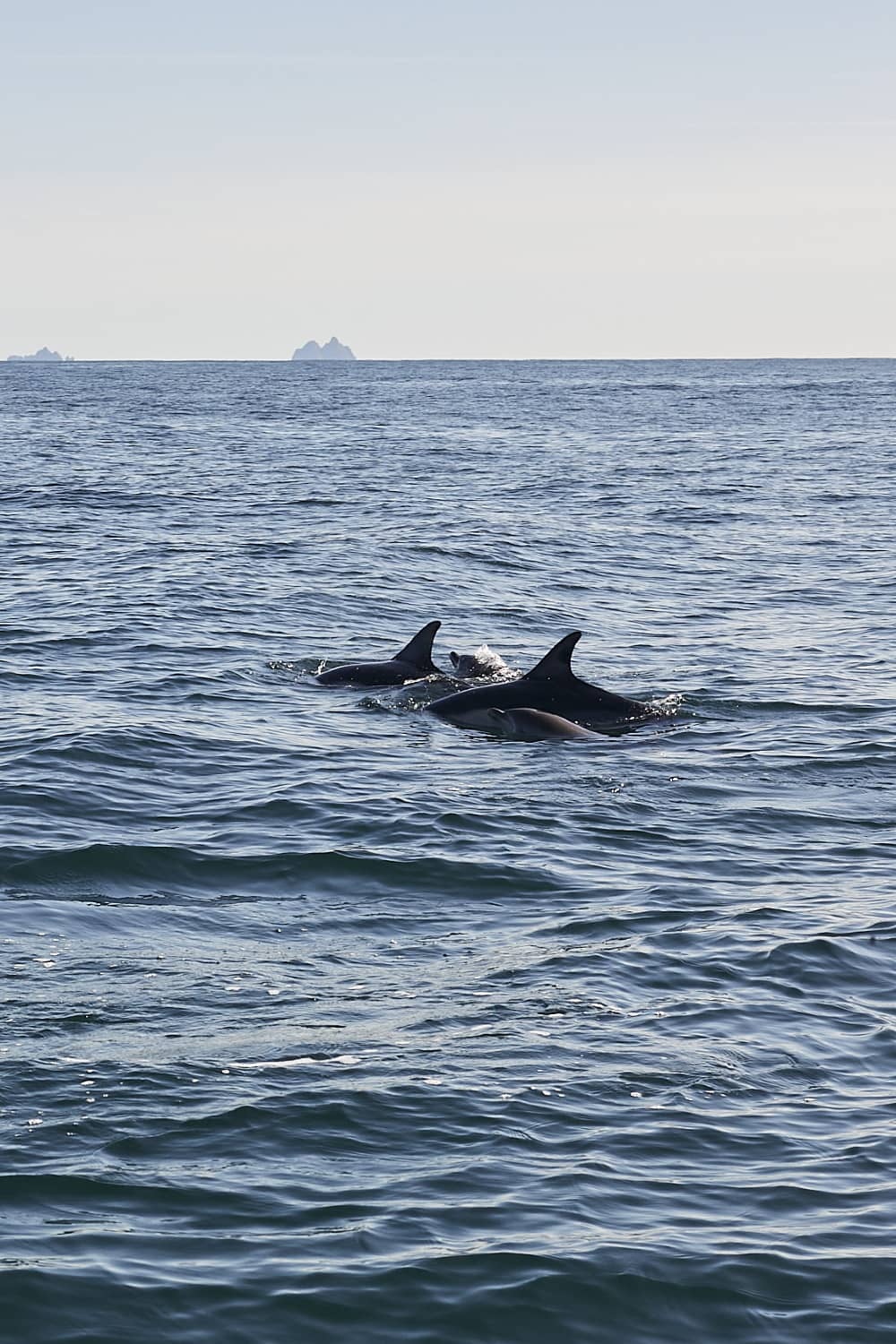
Dolphin pod

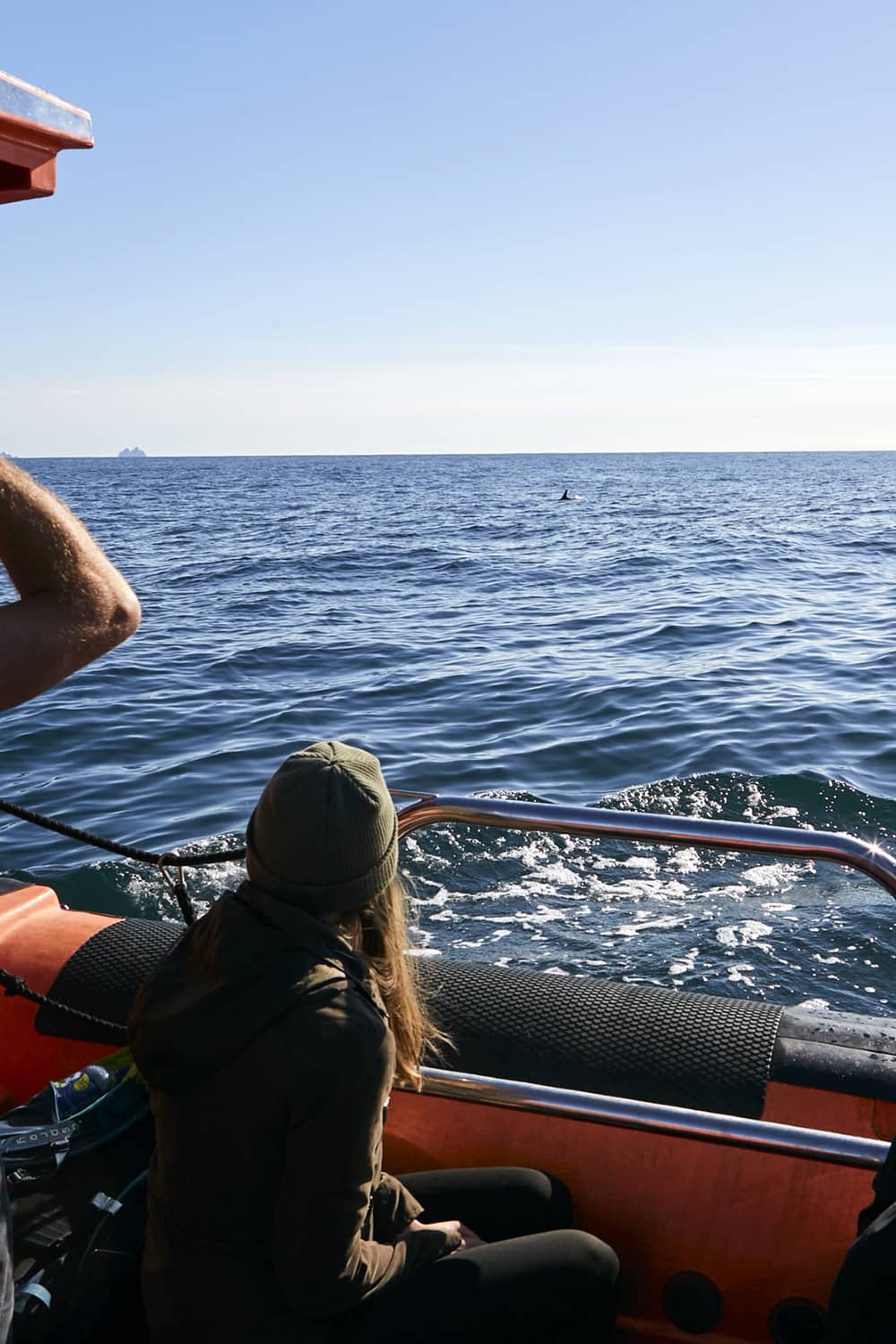
A dolphin's dorsal fin breaching the surface
As we’re enjoying the dolphin activity, a huge sleek, basalt-coloured hump breaches the surface of the water and with it comes an almost overwhelming stench of putrid fish – a minke whale. “That’s why they’re called ‘stinky minkys’m lads. Can you smell him?”, laughs Billy. It’s an exhilarating sight, with all of us transfixed and gasping whenever we see the whale.


Gannet in flight
Sea birds swoop overhead, and Billy points out manx shearwaters, storm petrels and gannets, who torpedo the water around us. He’s hoping for a humpback to make an appearance, but we’re all so high on wildlife, we don’t care. “Wow, lads, look at that,” Billy suddenly shouts.
“It’s a skua – wow, that’s so rare, that’s a much better sight than the minke whale.” We watch as the great skua – often described as the pirate of the sea – harasses a smaller bird in an effort to get it to drop or regurgitate its food, which it then scoops up.

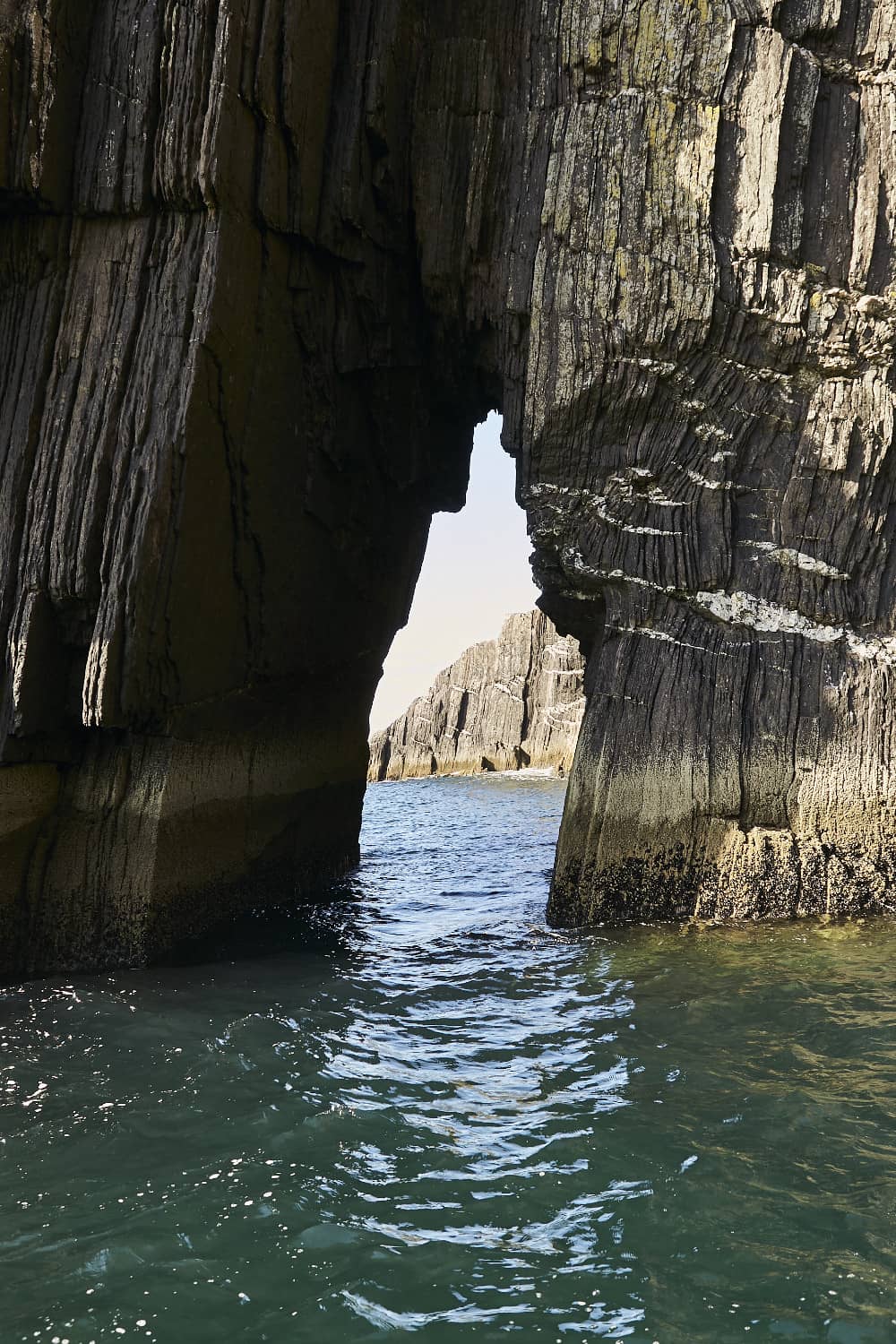
Sea arch, Dingle Peninsula

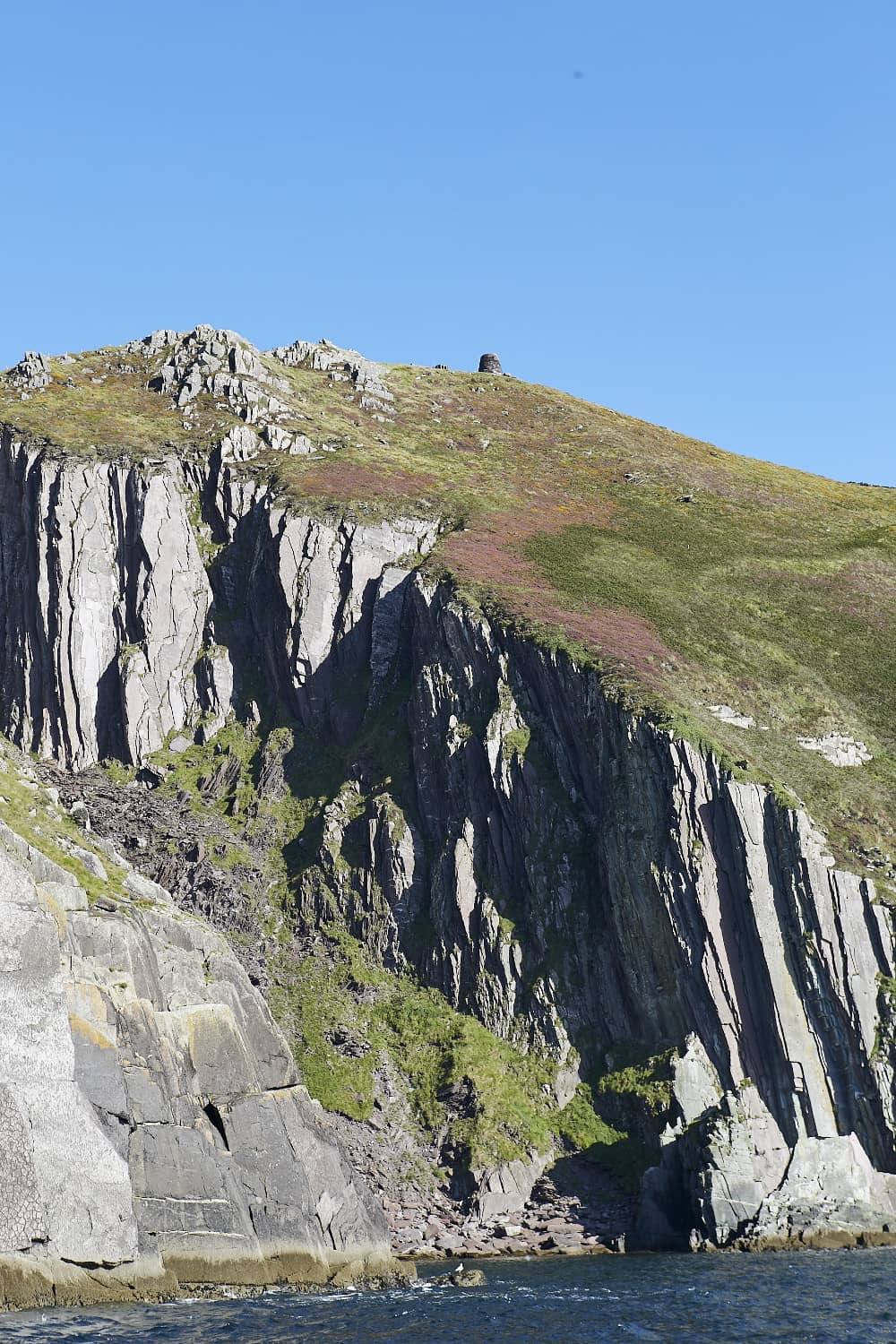
Cliffs near Dingle
Nobody minds when, after around an hour, Billy suggests we head back to town. We know we’ve done well. A satisfied calm takes over the boat as we chug our way to Dingle under royal blue skies, stopping to spend a few moments under the incredible sea cliffs and craggy sea arches on the peninsula’s coastline.

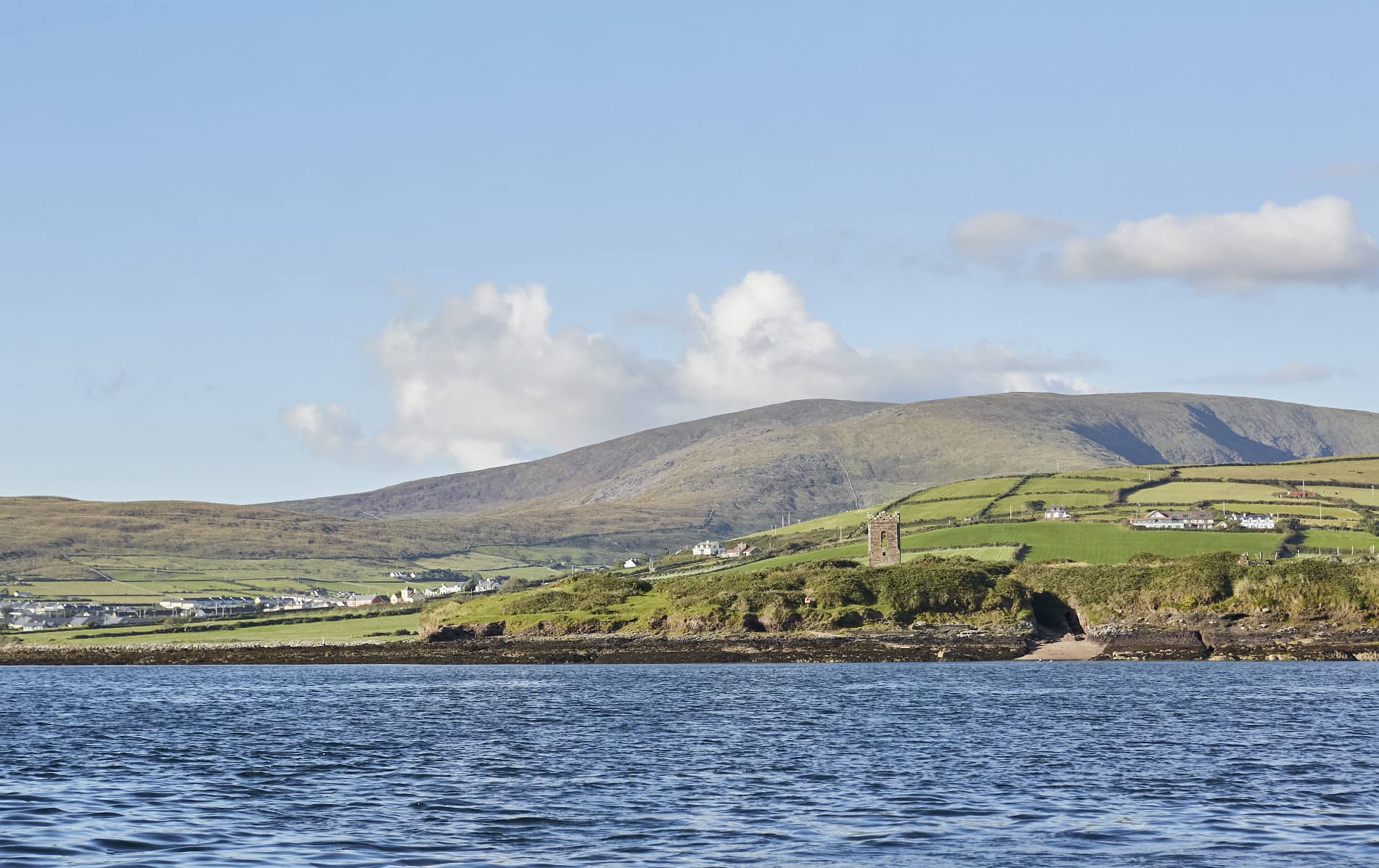
Dingle Bay
Stepping off the boat in Dingle, we’re all exhausted but utterly delighted with ourselves. It feels like the day has been spent on another planet, and it takes a while to adjust to the busy town. But a few hours later, sitting around the crackling warmth of the fire at Foxy John’s, I’m already planning my return.
The Blaskets keep calling.





